*NURSING > HESI > Advanced Pathophysiology HESI review questions and answer. Predictor questions (All)
Advanced Pathophysiology HESI review questions and answer. Predictor questions
Document Content and Description Below
metabolic acidosis - low pH, low HCO3 metabolic alkalosis - high pH, high HCO3 respiratory acidosis - low pH, high CO2 respiratory alkalosis - high pH, low CO2 metabolic acidosis causes - ... Primary Cause: Addition of large amounts of fixed acids to body fluids; Contributing Causes: Lactic acidosis (circulatory failure), Ketoacidosis (diabetes, starvation), Phosphates and sulfates (Renal dz), Acid ingestion (salicylates), Secondary to respiratory alkalosis, Adrenal insufficiency metabolic alkalosis causes - Primary Cause: Retention of base or removal of acid from body fluids; Contributing Causes: Excessive gastric drainage, Vomiting, Potassium depletion (diuretic therapy), Burns, Excessive Sodium Bicarb admin respiratory acidosis causes - Primary Cause: Hypoventilation (causes hypercapnia); Contributing Causes: COPD, Pulmonary dz, Drugs, Obesity, Mechanical asphyxia, Sleep Apnea respiratory alkalosis causes - • Primary stimulation of CNS: hyperventilation. Can be due to emotional origin (anxiety, fear, apprehension), CNS infection (encephalitis), or salicylate poisoning. • Reflex stimulation of CNS. Hypoxia stimulates hyperventilation (heart failure, pneumonia, pulmonary emboli). Can also be stimulated by fever. • Mechanical hyperventilation, resulting in "over breathing." Neuro exams include: - -hand strength, limb strength -ability to follow commands -ability to move eyes in equal and uniform fashion -deep pain stimulus response -symmetrical and coordinated movement -clear, speech. Acute Bronchitis patho - infection or inflammation of the bronchi. In more than 90% of individuals, this is a self-limiting disorder caused by viruses. will not have high fevers and will have only scattered coarse wheezes on examination without evidence of pulmonary consolidation. Chest X-ray examination is usually normal. Chronic Bronchitis patho sequence - The chronic bronchitis pathophysiologic sequence of events is as follows: Hypersecretion of bronchial mucus, which leads to Recurrent respiratory infections, which lead to Airway inflammation, which leads to Bronchospasm and irreversible airway obstruction chronic bronchitis patho - characterized by chronic inflammation with recruitment of neutrophils, macrophages, and lymphocytes to the lung, with progressive damage to airways and the lung parenchyma. hyperplasia of the mucus-producing goblet cells of the bronchial epithelium occurs, resulting in the production of large amounts of mucus in the airways. Mucus accumulation facilitates the colonization and growth of bacteria, which further contributes to airway inflammation, bronchospasm, and eventual scarring. Narrowed airways cause v/q mismatching and expiratory airway obstruction with air trapping, resulting in both hypoxemia and hypercapnia. CAD risk factors pathological - Major: Advanced age Gender (men > women before age 55, women > men after age 55) Dyslipidemia Hypertension Smoking Diabetes mellitus and insulin resistance Obesity Sedentary lifestyle Metabolic syndrome Atherogenic diet Non traditional: Markers of inflammation C-reactive protein (CRP) Fibrinogen Protein C Others Troponin I Adipokines Chronic kidney disease Air pollution & ionizing radiation Medications Coronary artery calcification and carotid artery wall thickness atherosclerosis pathophysiology - -Inflammatory response -Injury to endothelial lining -LDL penetrates vessel wall -inflammation/macrophage adhesion -cytokines released -release enzymes & oxygen radicals that oxidize LDL -foam cells occur that form fatty streak -collagen deposits & makes firm plaque CKD patho - lab values - azotemia - increased serum urea, serum creatinine, & other nitrogenous compounds Uremia Proteinuria urine sediment elevated potassium elevated creatinine clearance anemia elevated potassium GFR < 15 mL/min = dialysis colon cancer risk factors - -obesity -ETOH -Family hx -polyposis -UC -Diet: high fat, high red meat, low fruits, low fiber -Smoking Colon cancer screening - Begin at 50 FOBT (fecal occult blood test) Colonoscopy q 10y -monitoring for recurrence using eval of serum levels of tumor marker carcinoembryonic antigen (CEA) colorectal cancer manifestations - gradual onset of changes in bowel movements, melena or hematochezia, weight loss, abdominal pain, and bowel obstruction. [Show More]
Last updated: 1 year ago
Preview 1 out of 14 pages
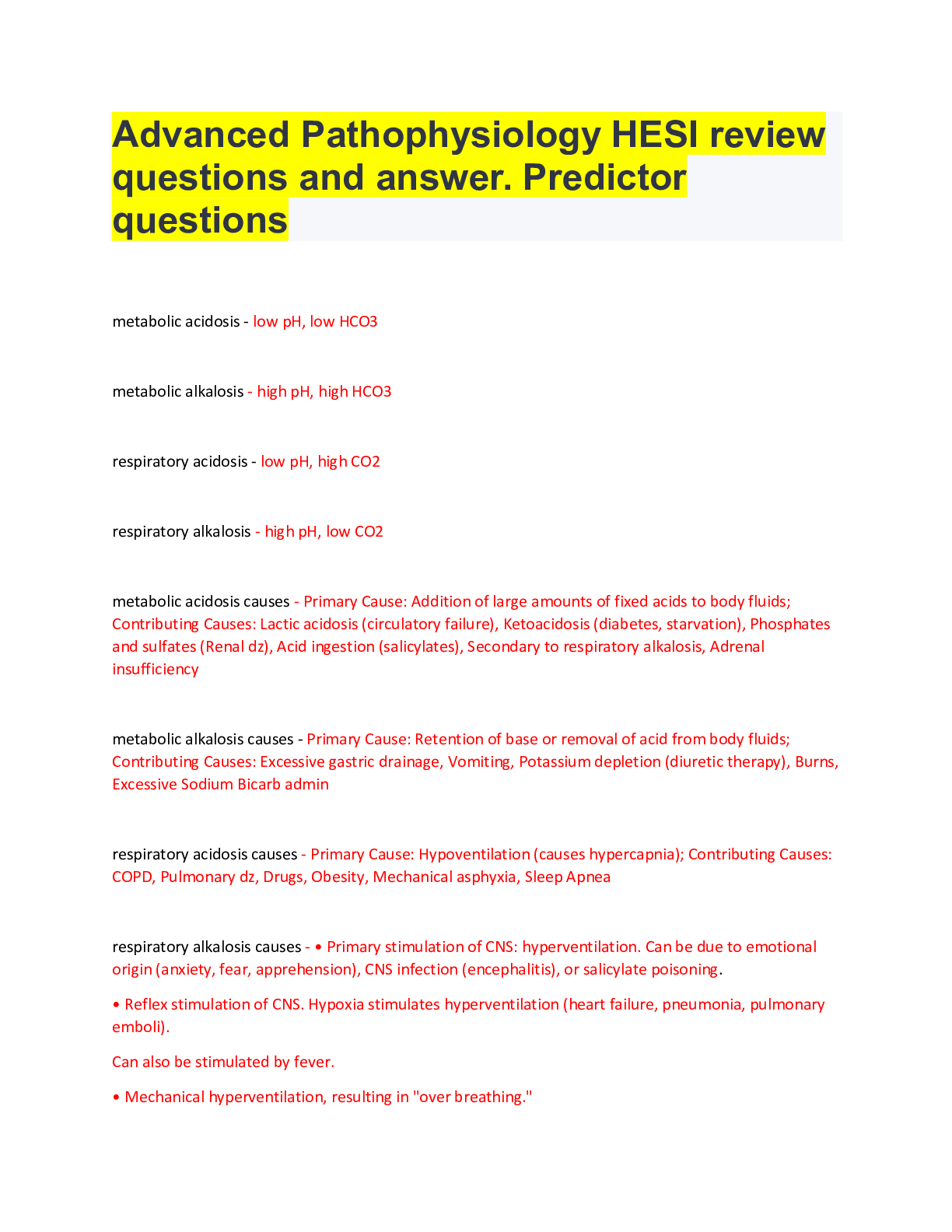
Reviews( 0 )
Document information
Connected school, study & course
About the document
Uploaded On
Mar 28, 2022
Number of pages
14
Written in
Additional information
This document has been written for:
Uploaded
Mar 28, 2022
Downloads
0
Views
50

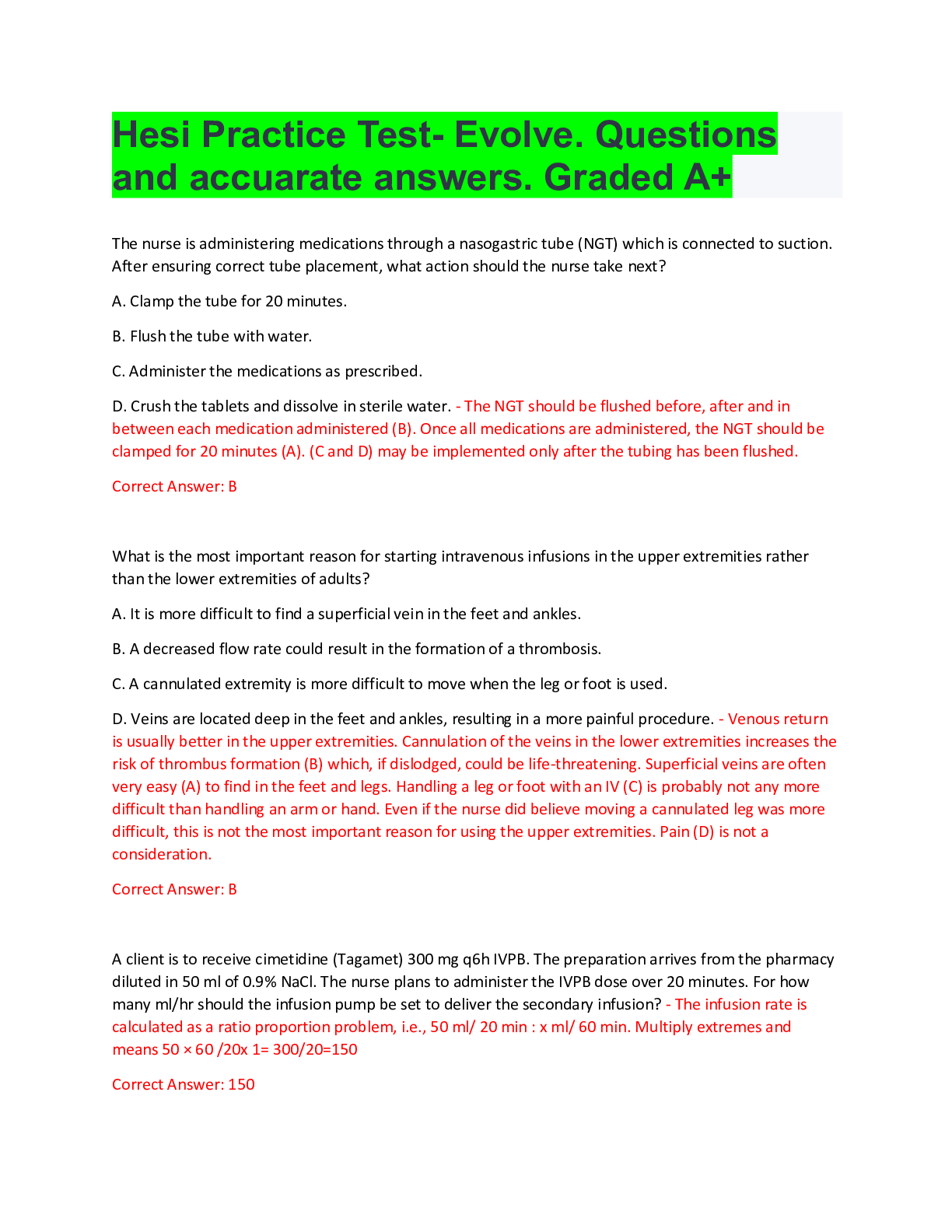
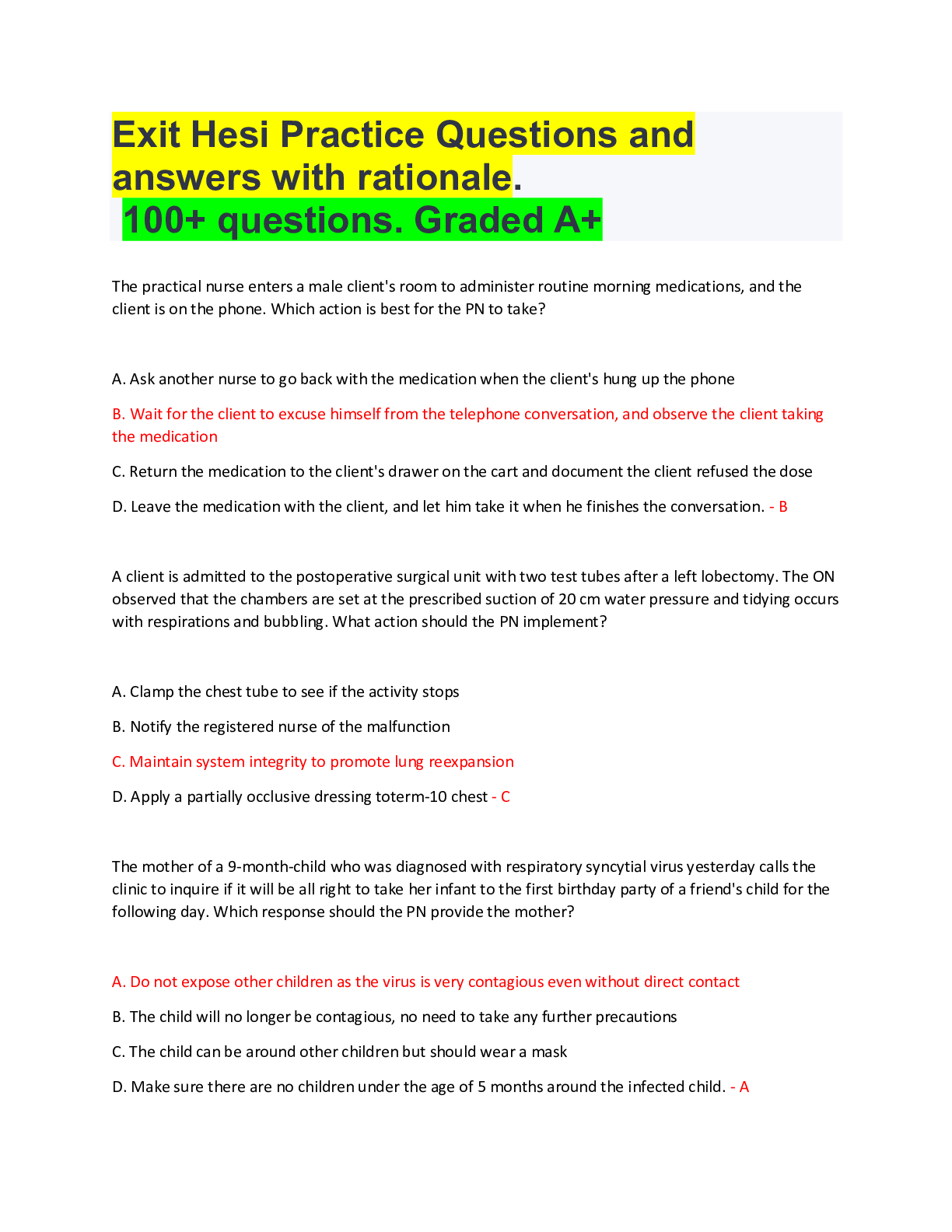
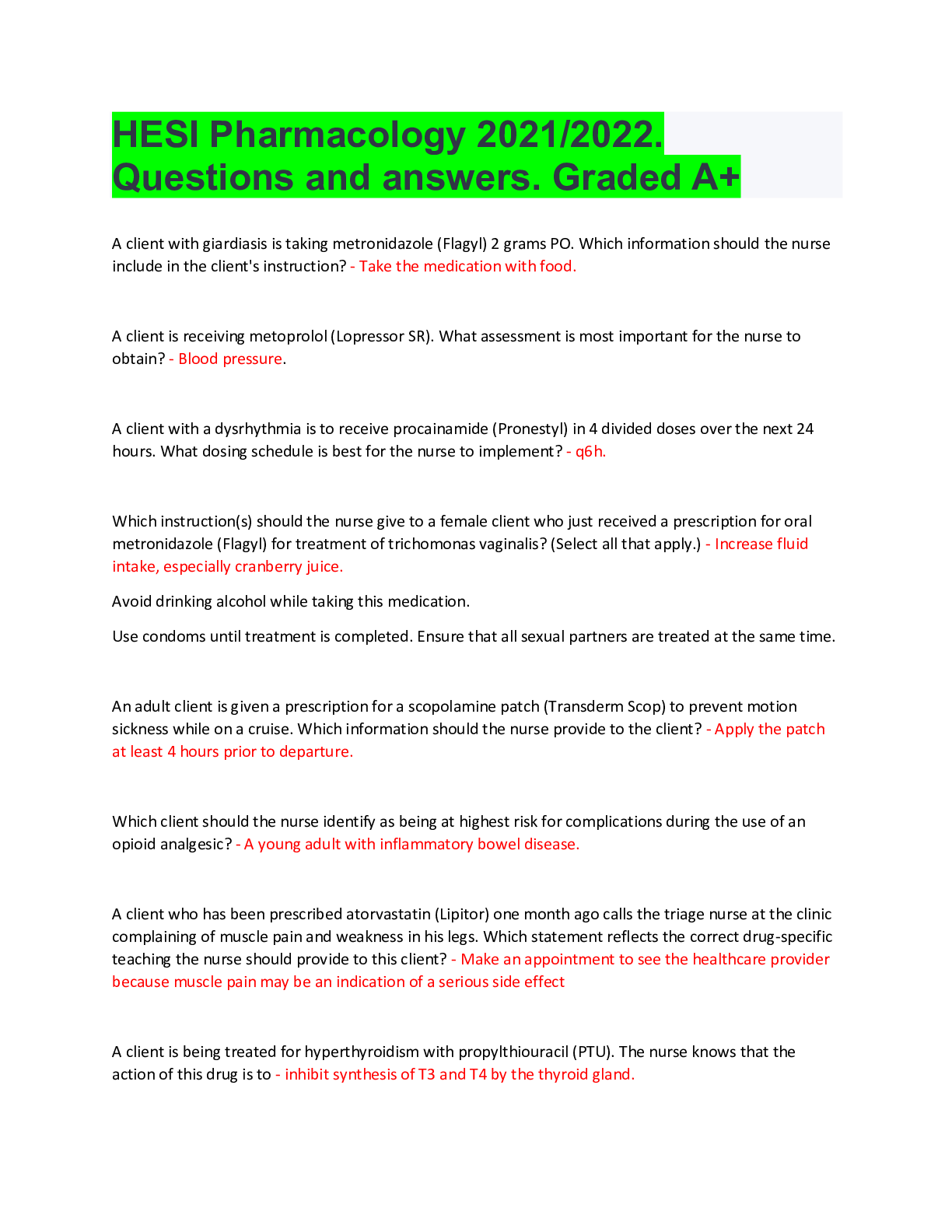
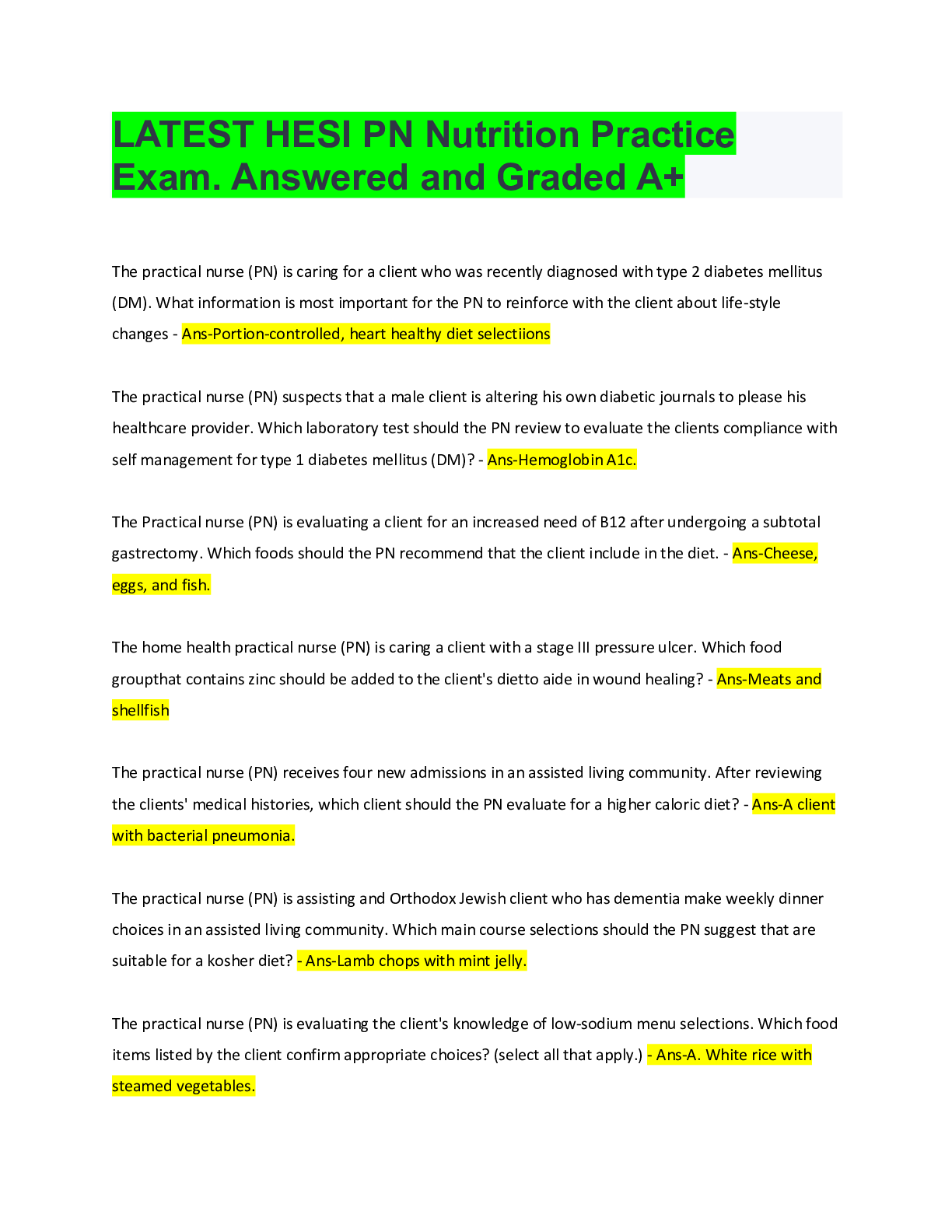

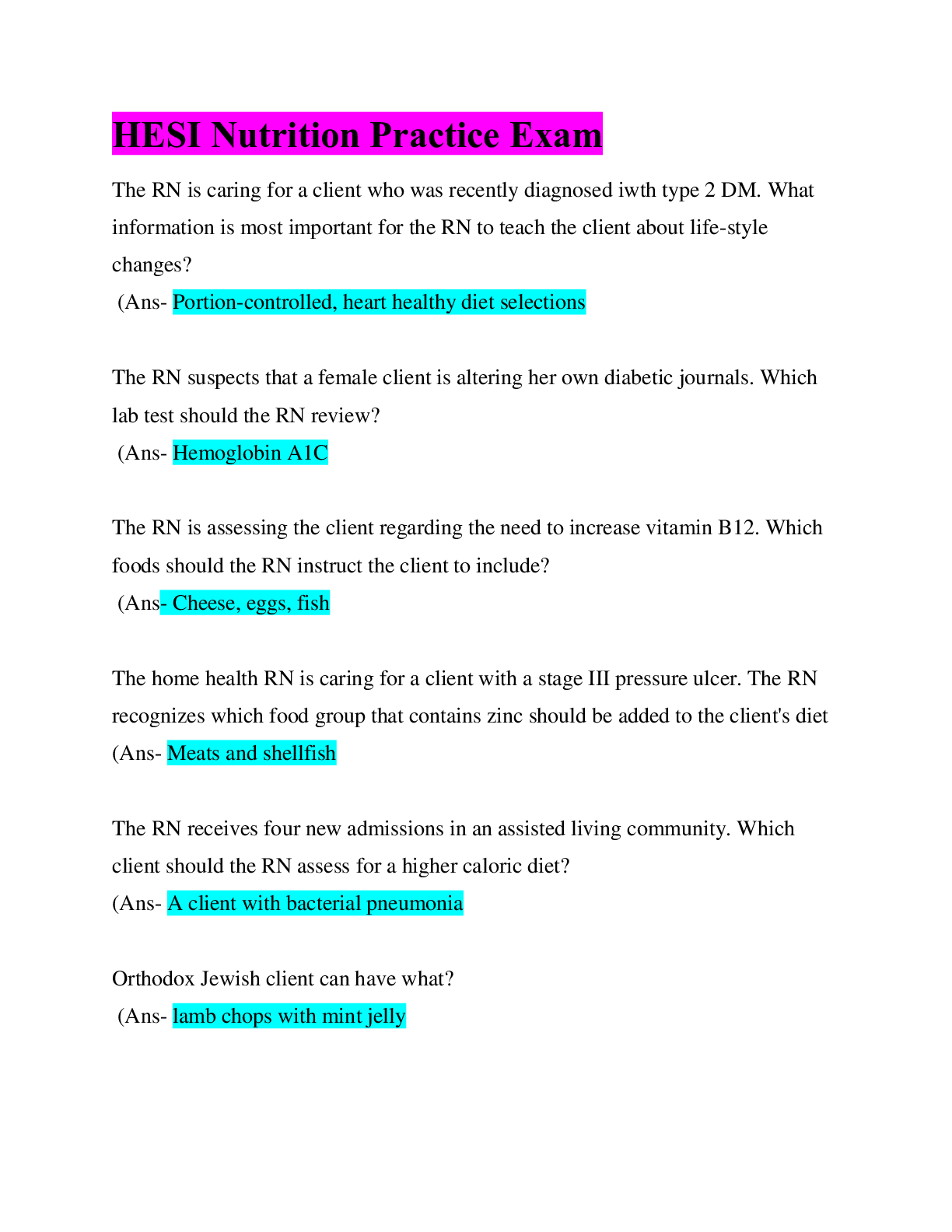
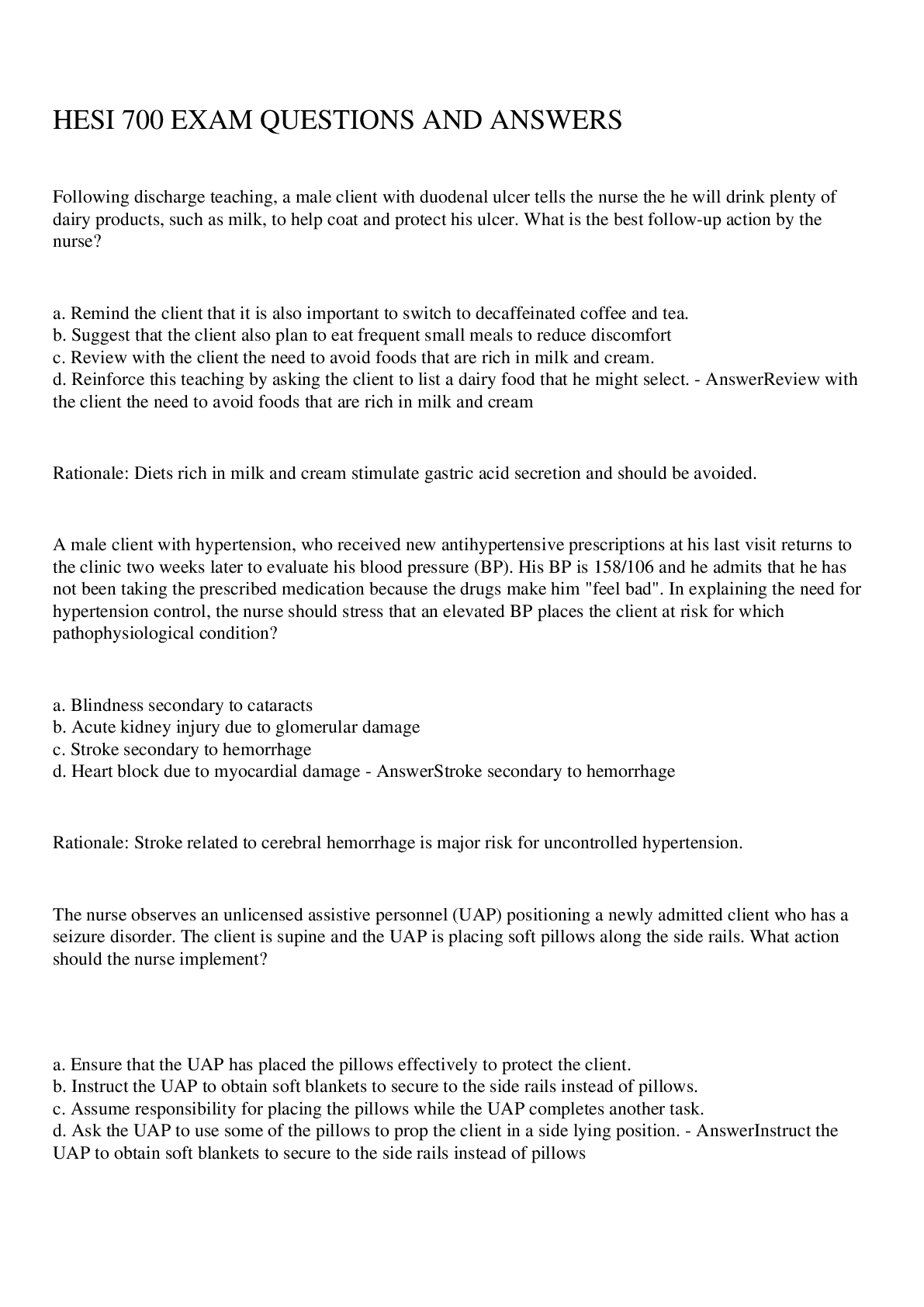

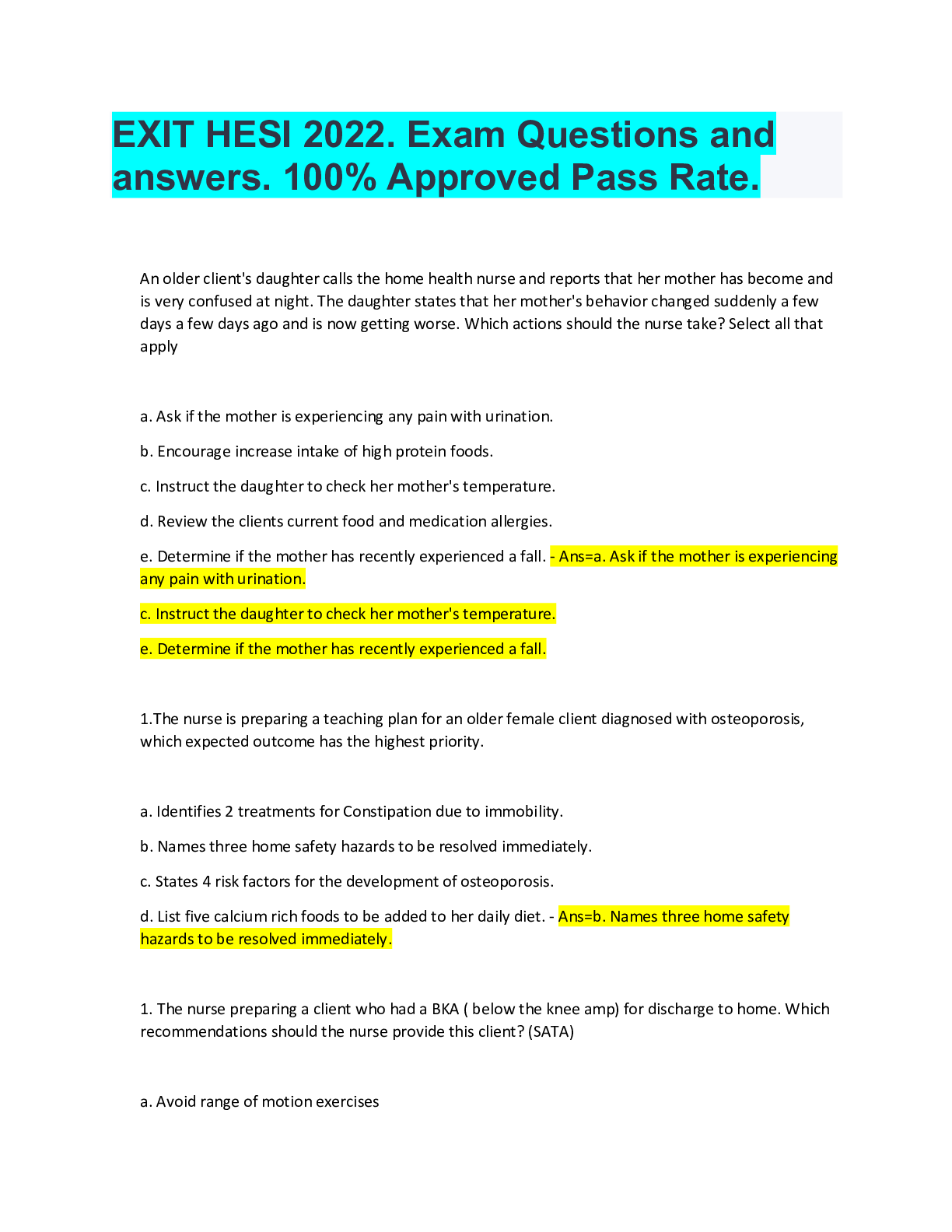
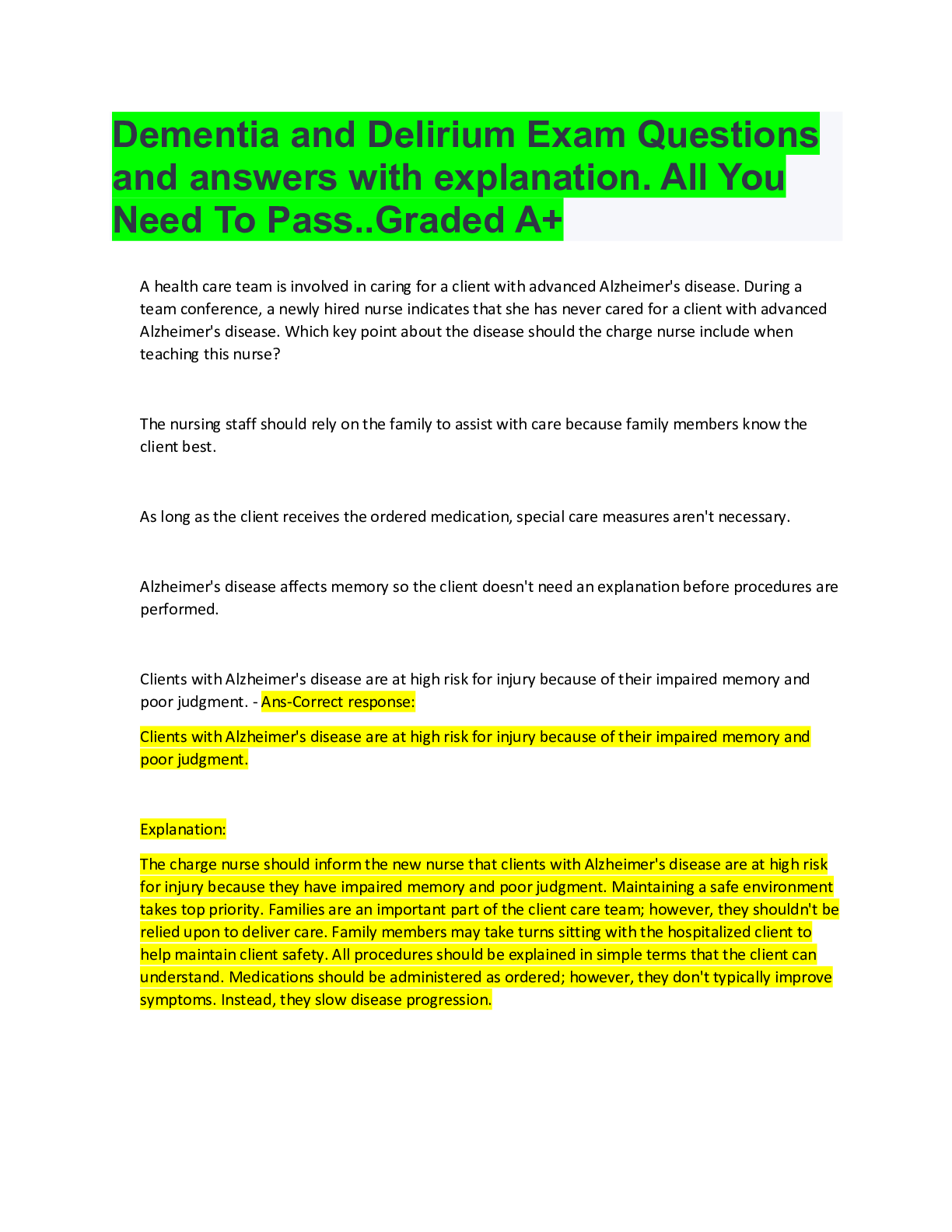


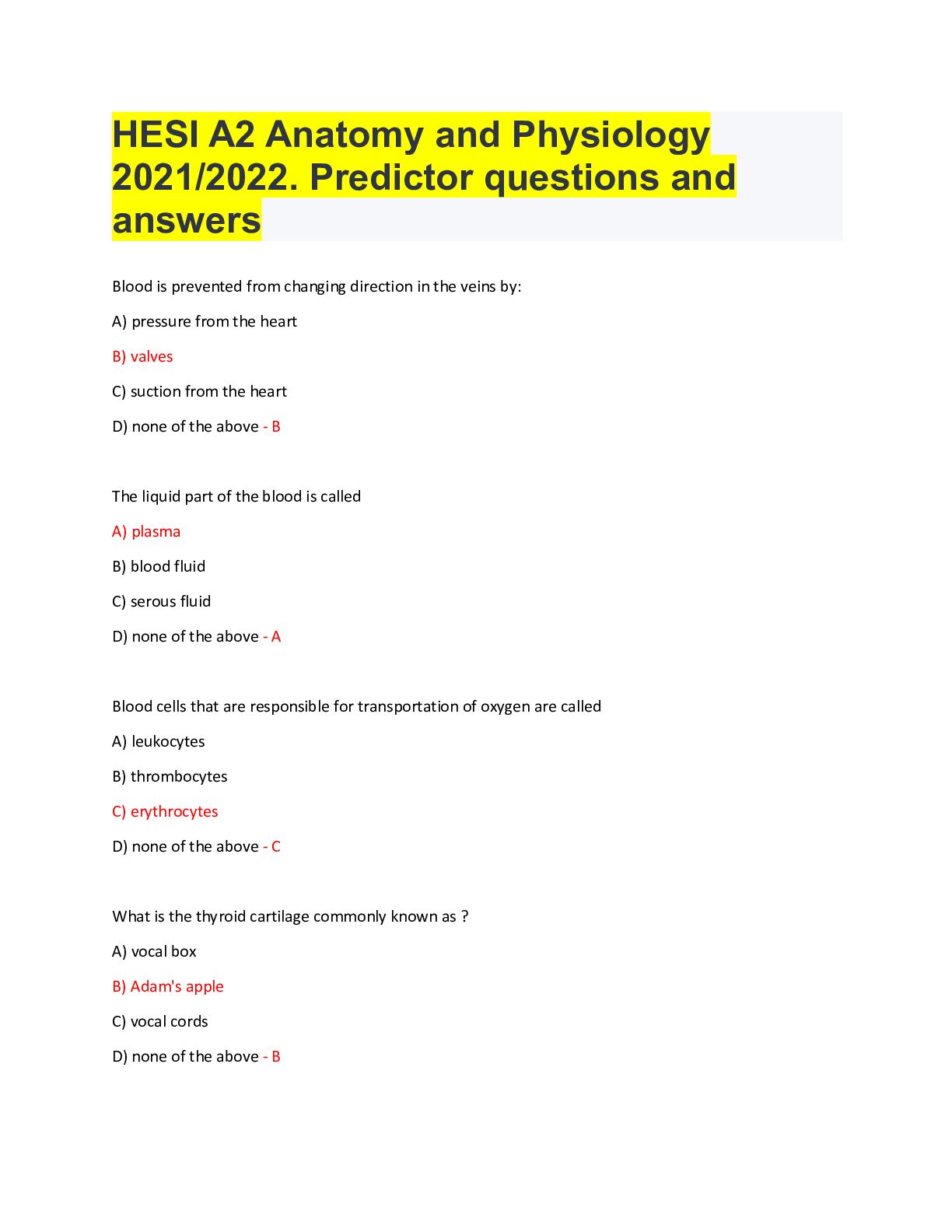

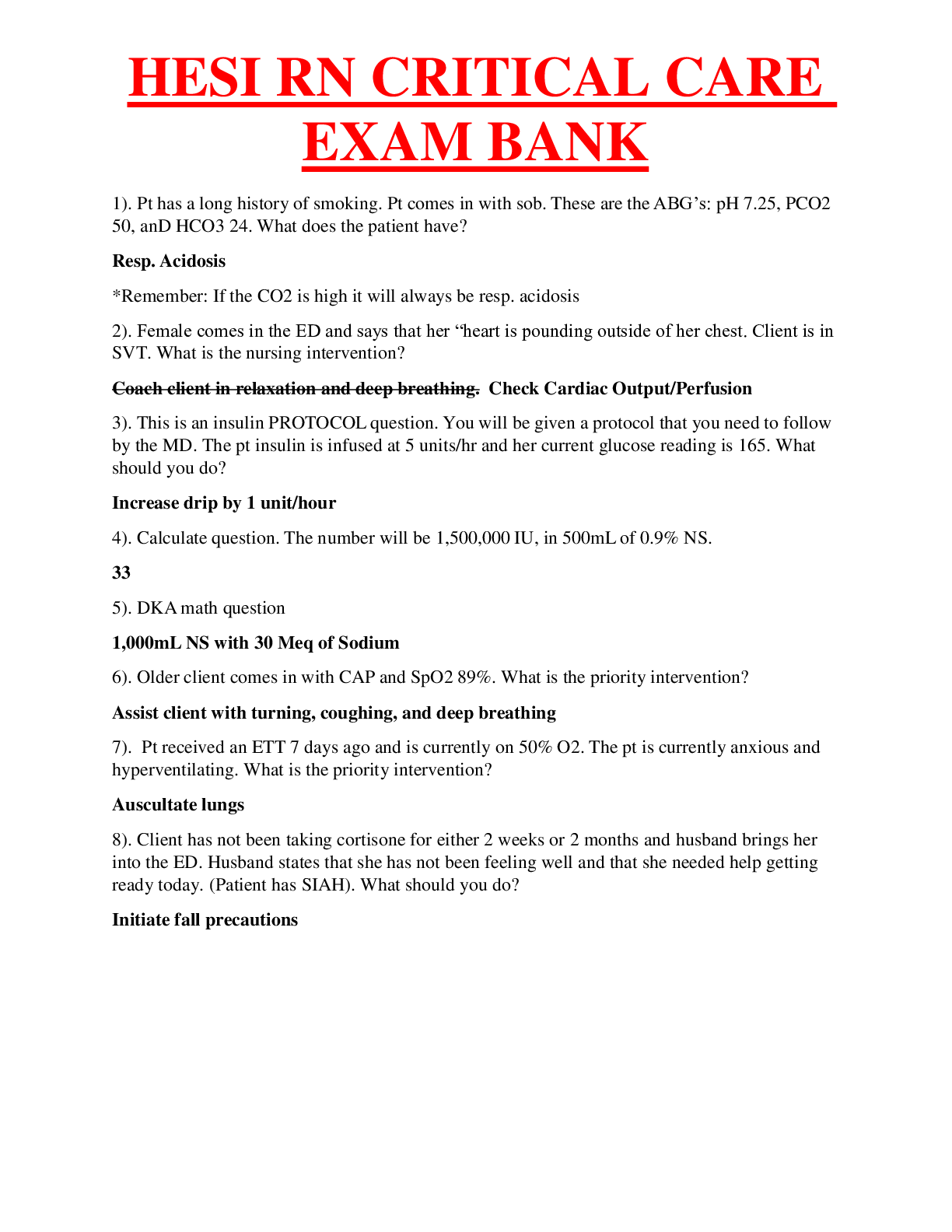
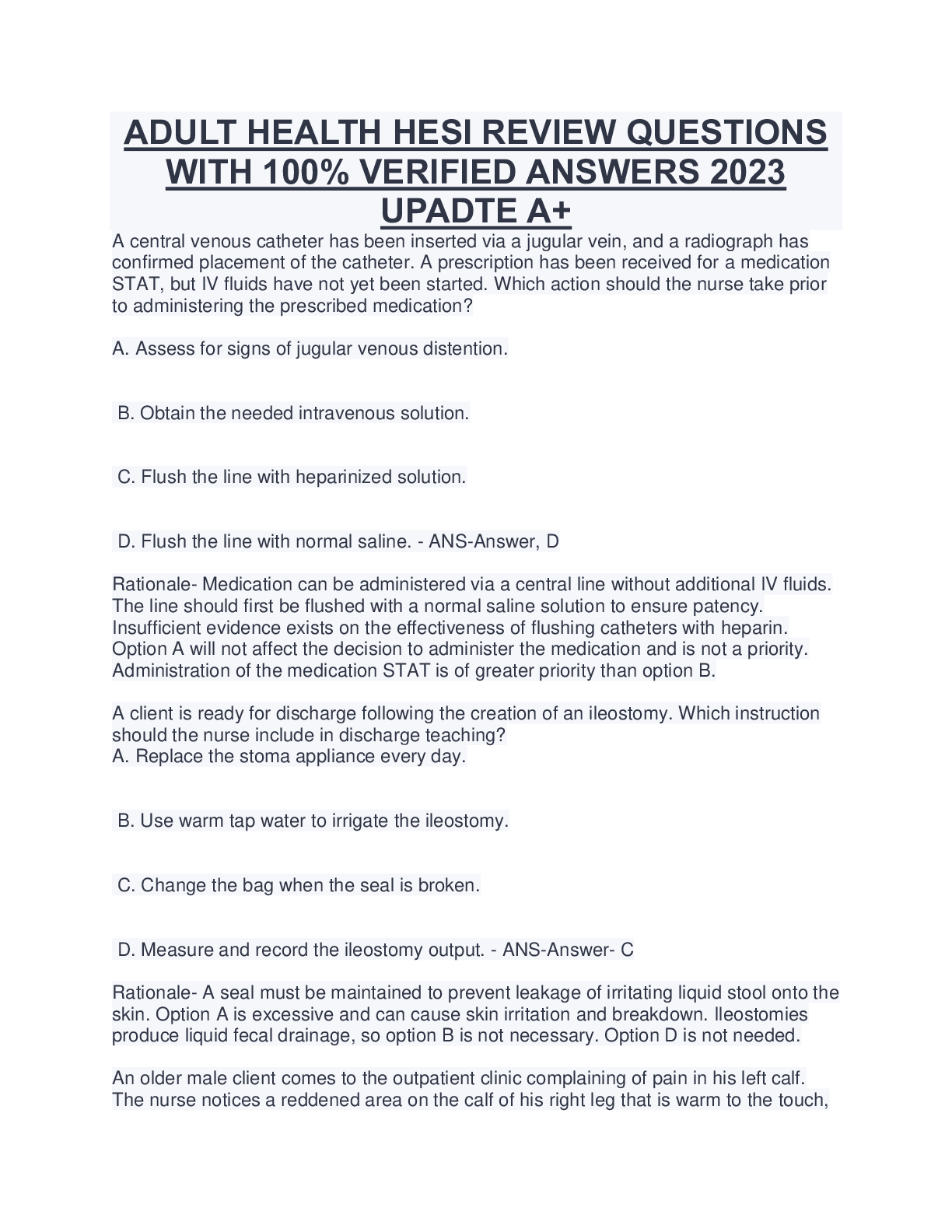
.png)
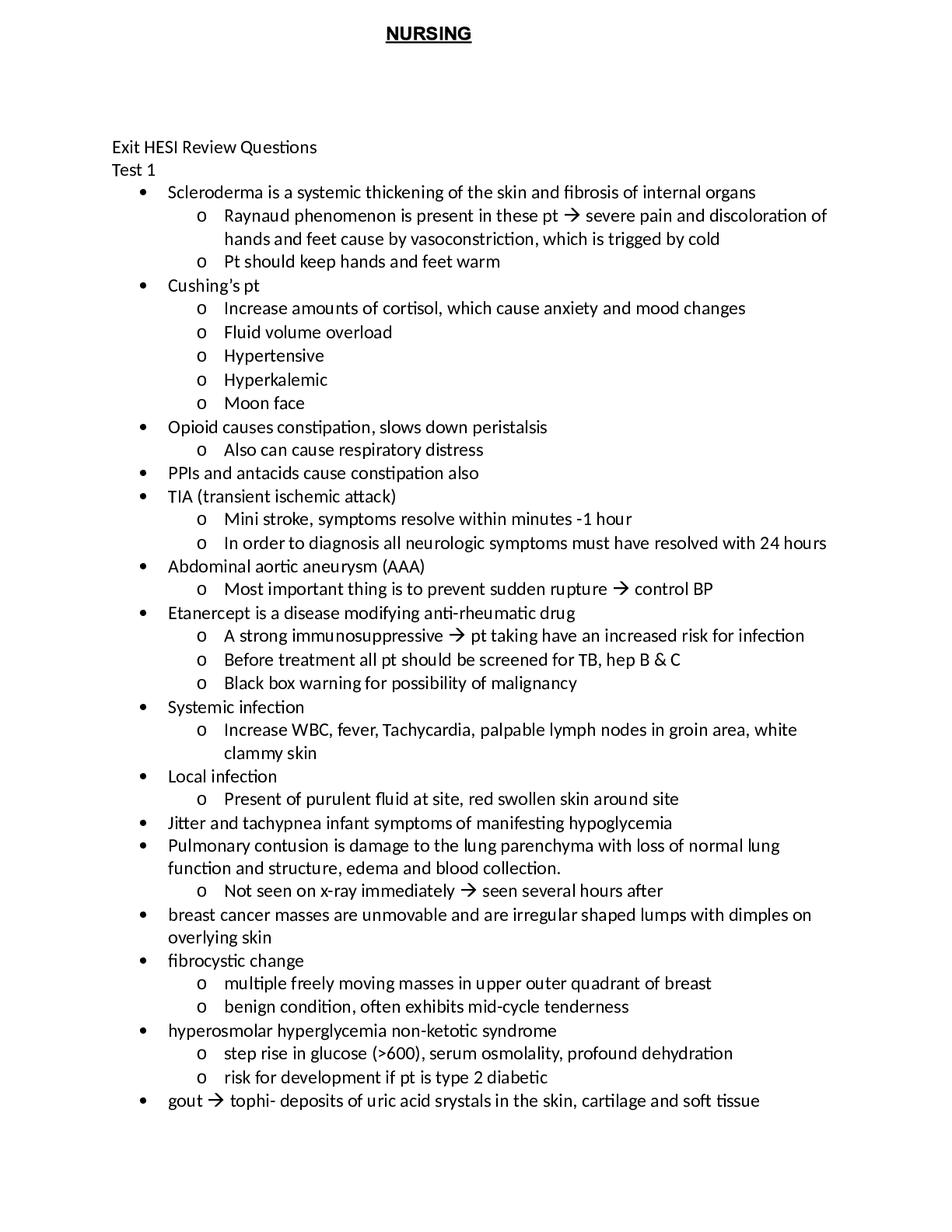
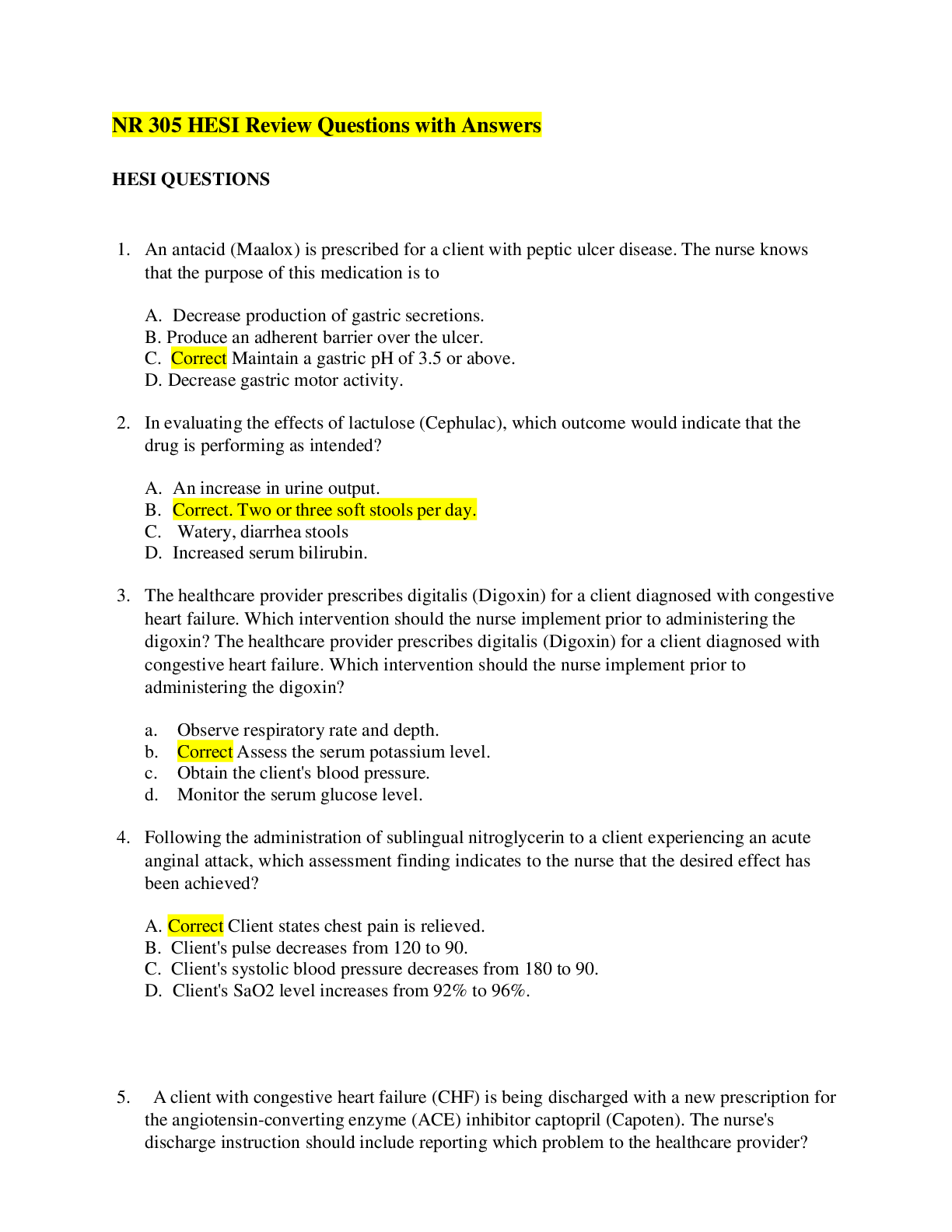

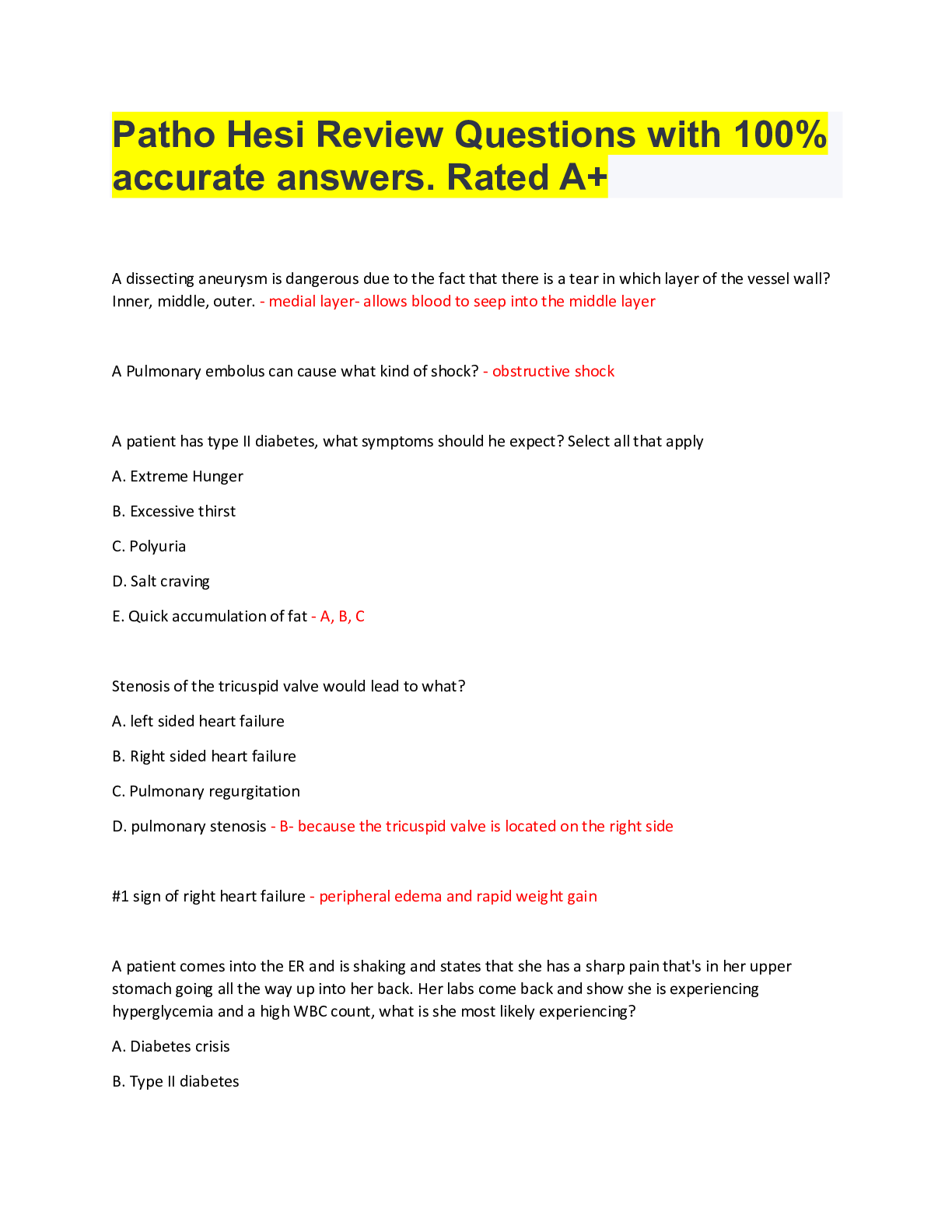
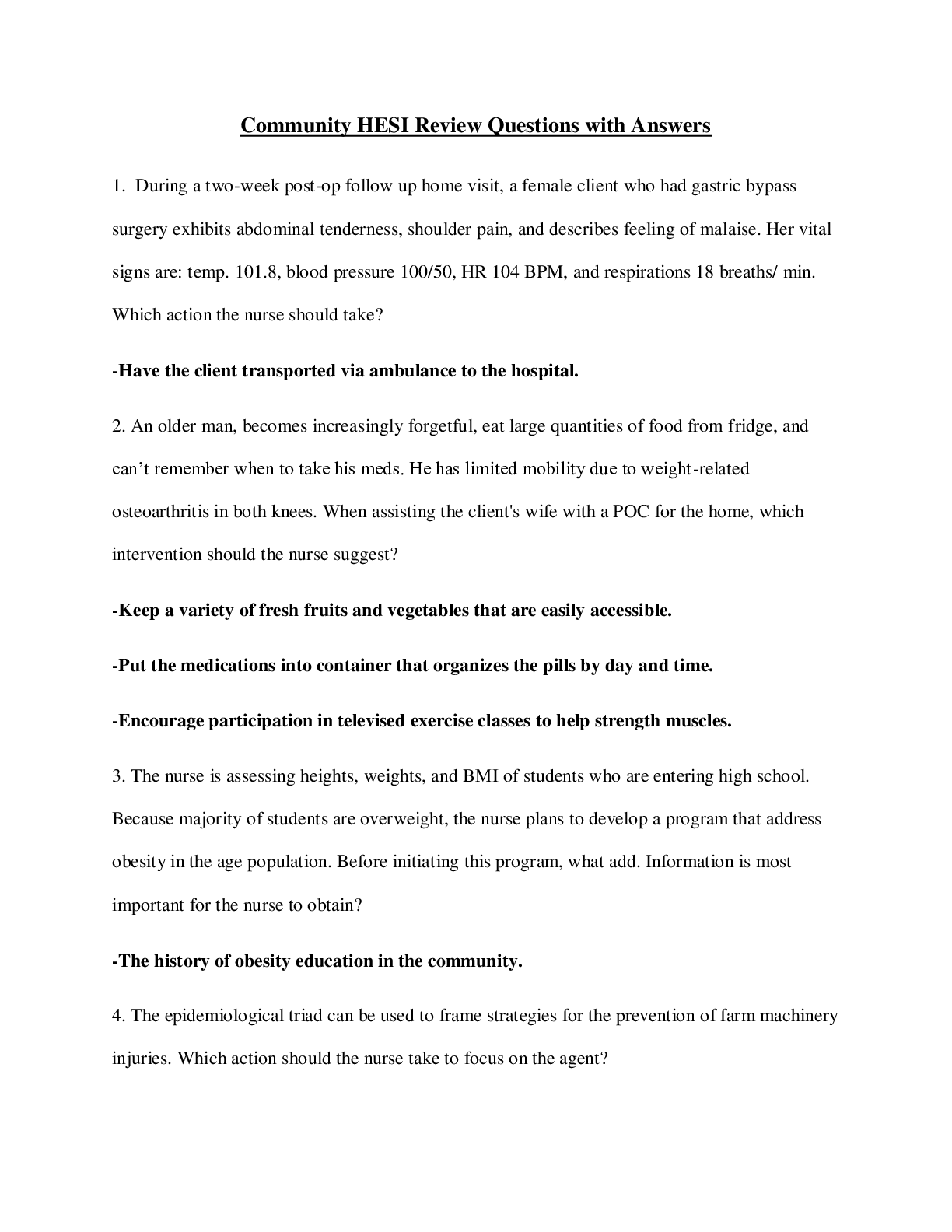
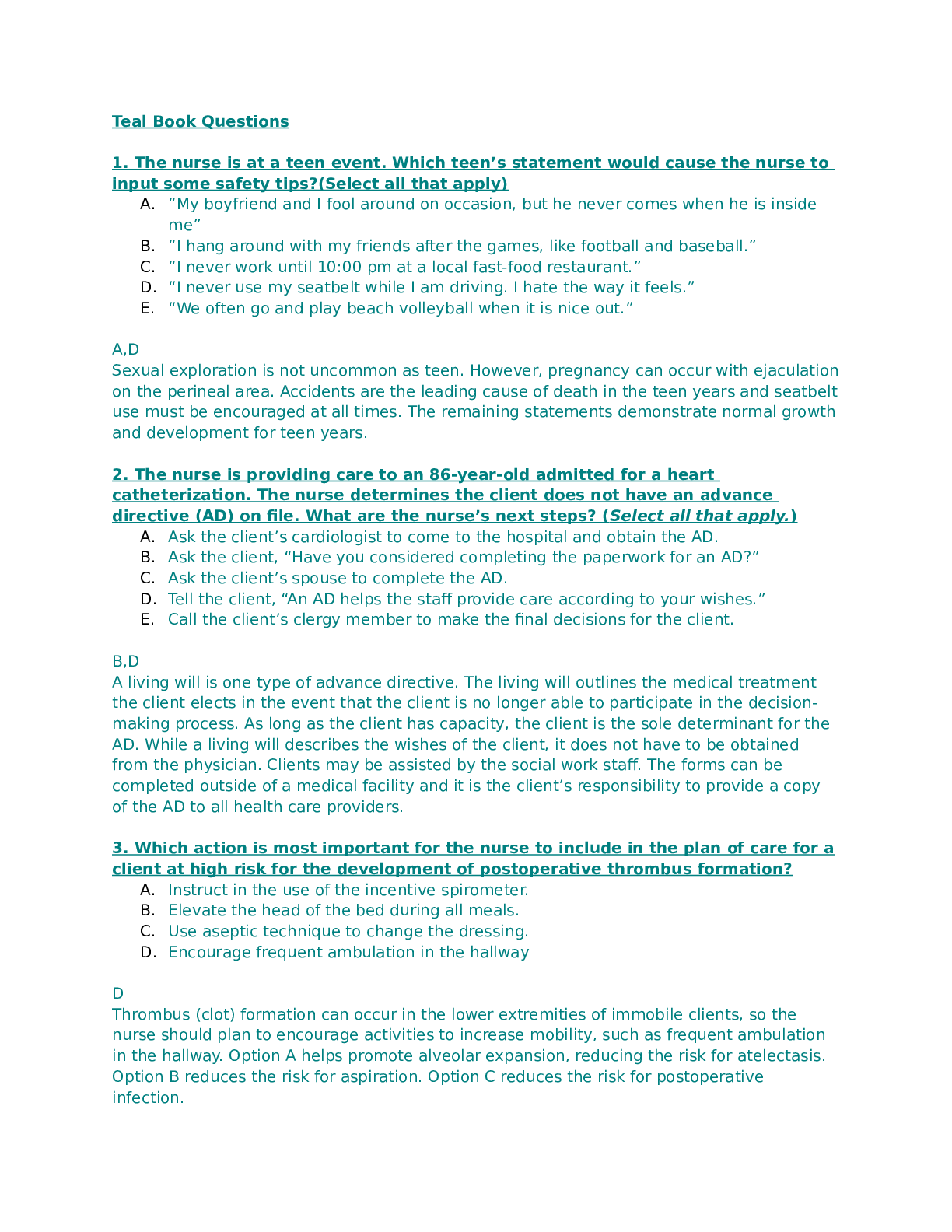
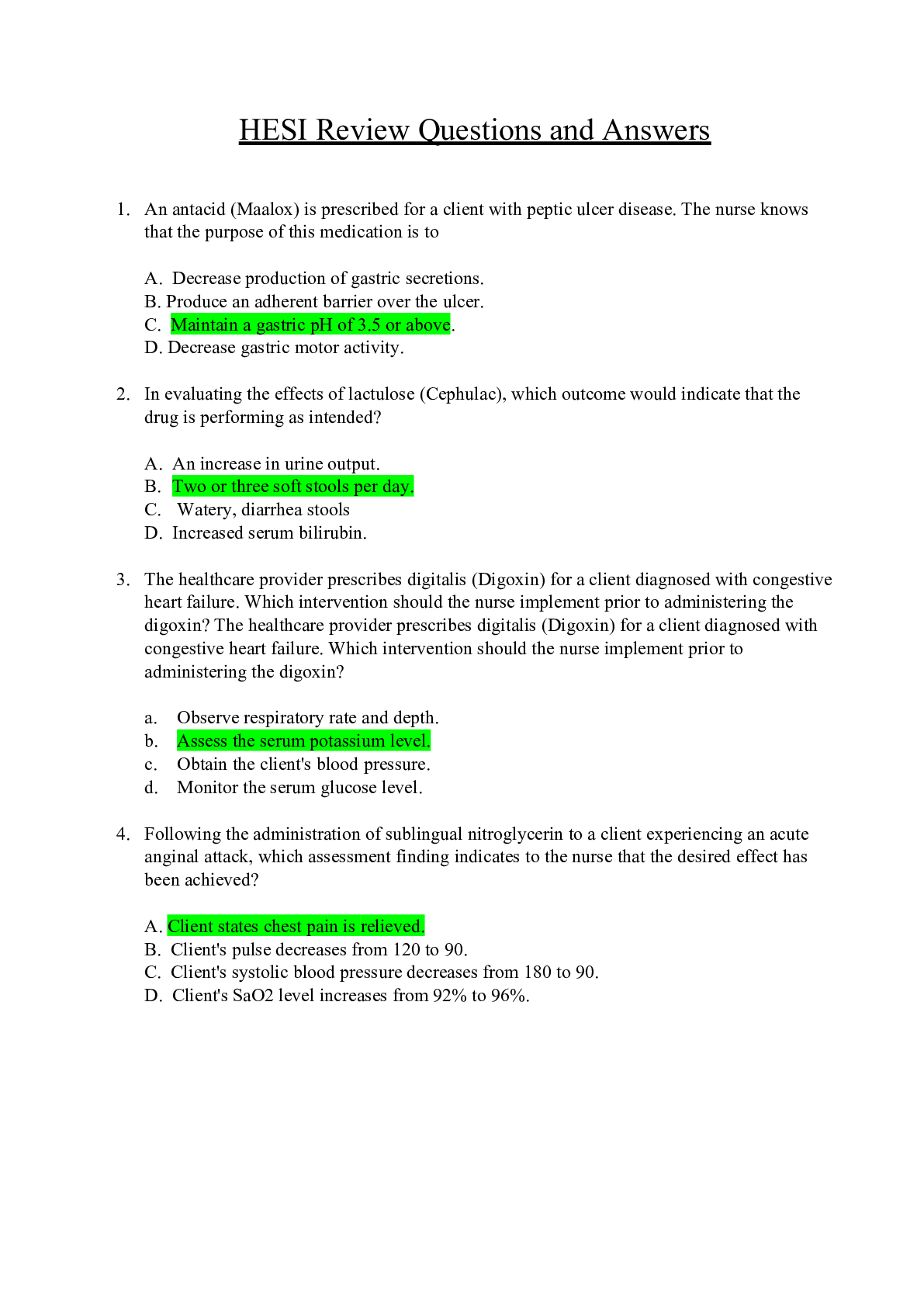

 (1).png)
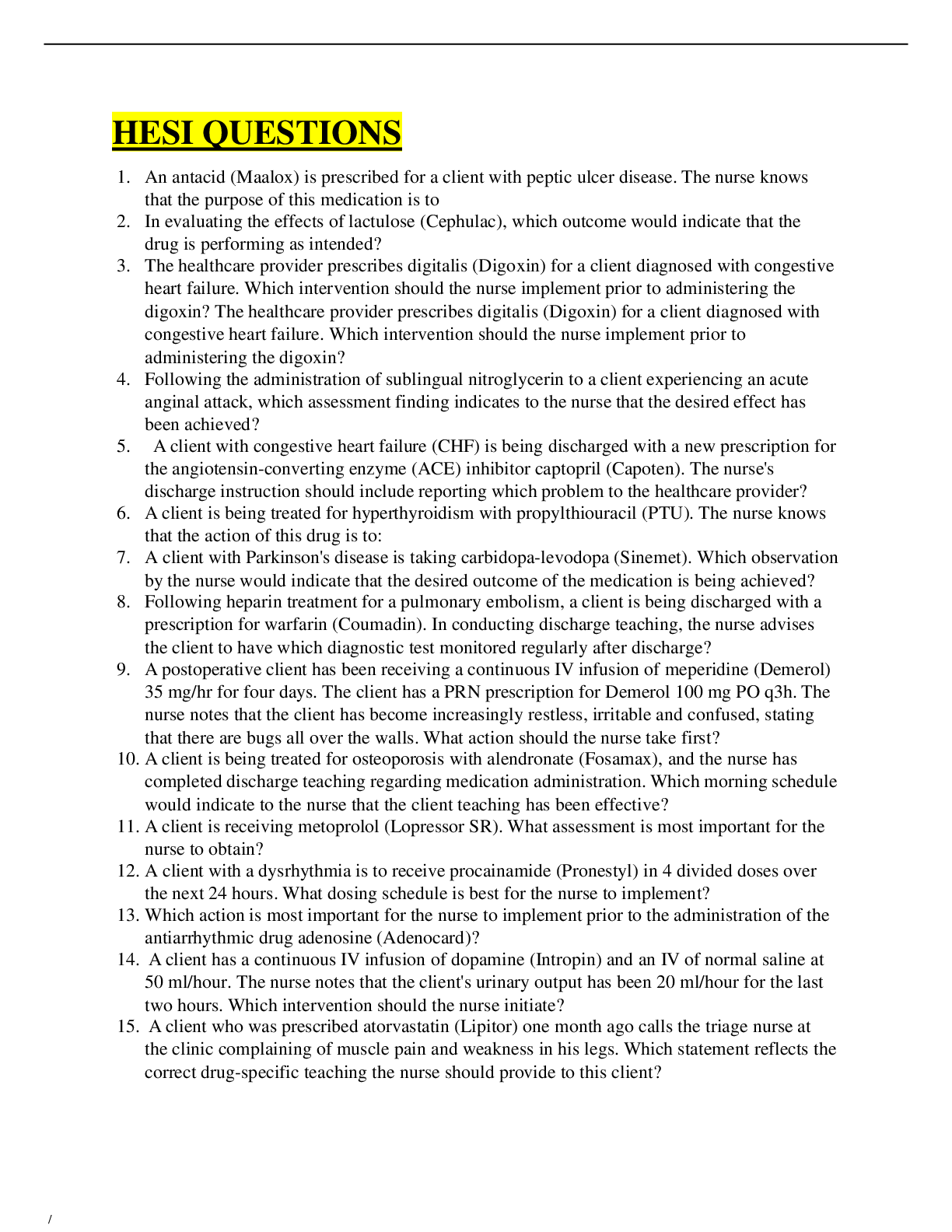
.png)
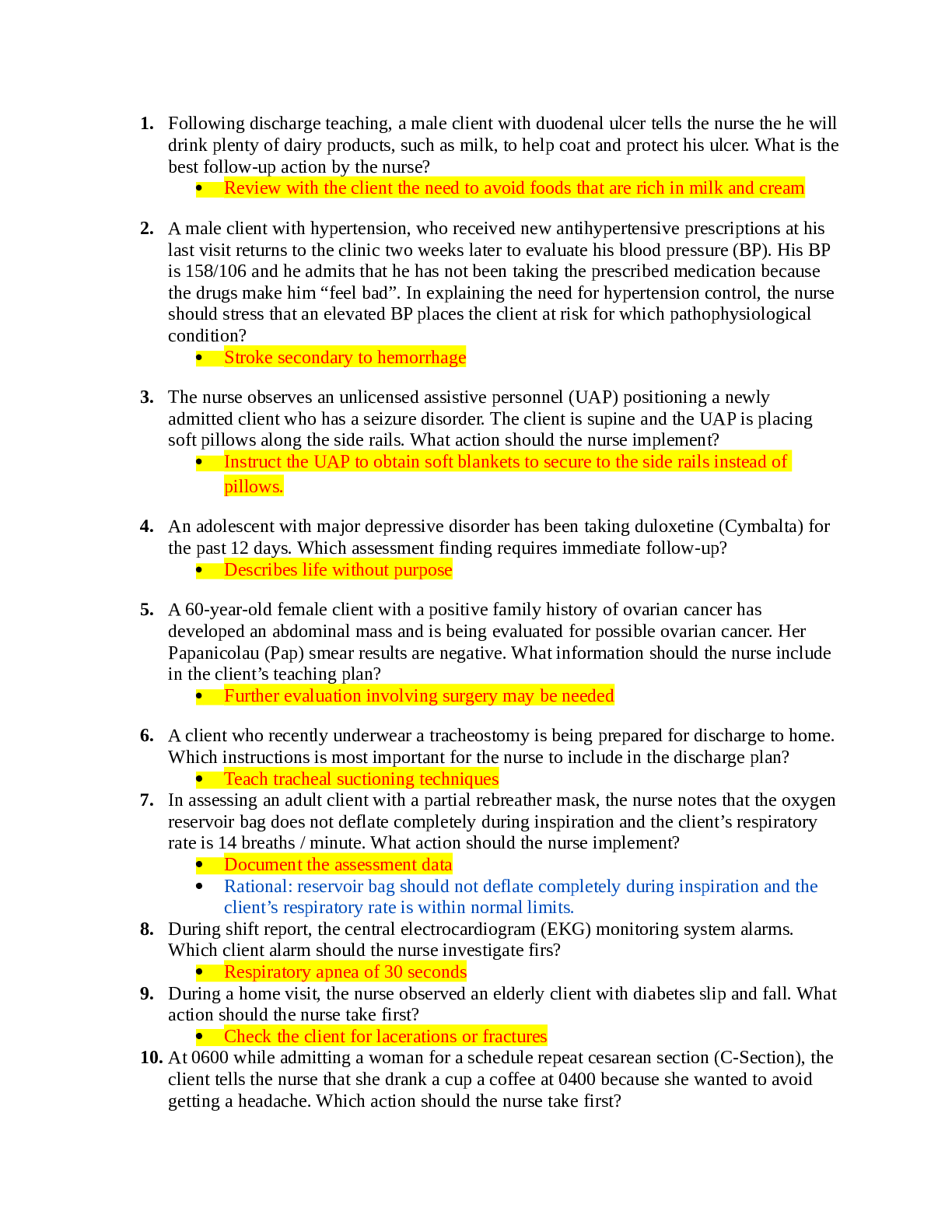
.png)
.png)

